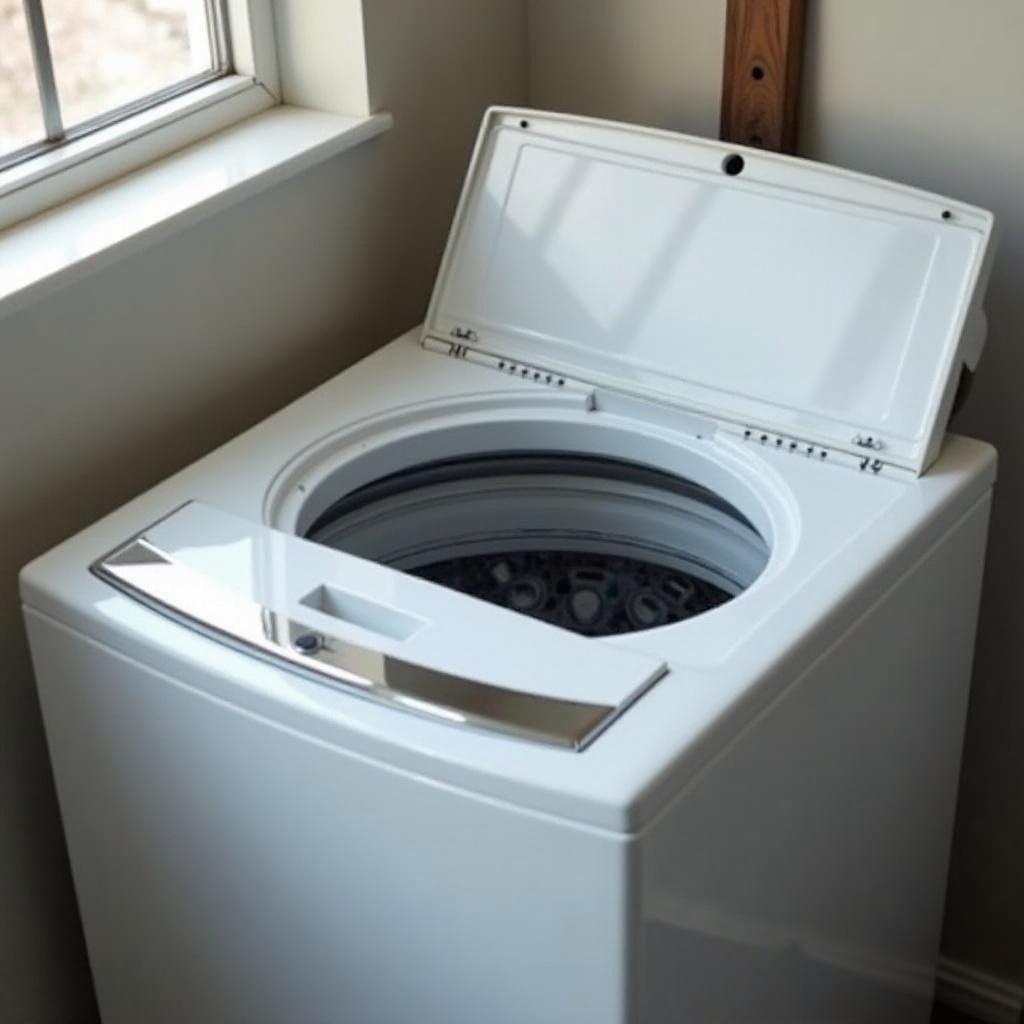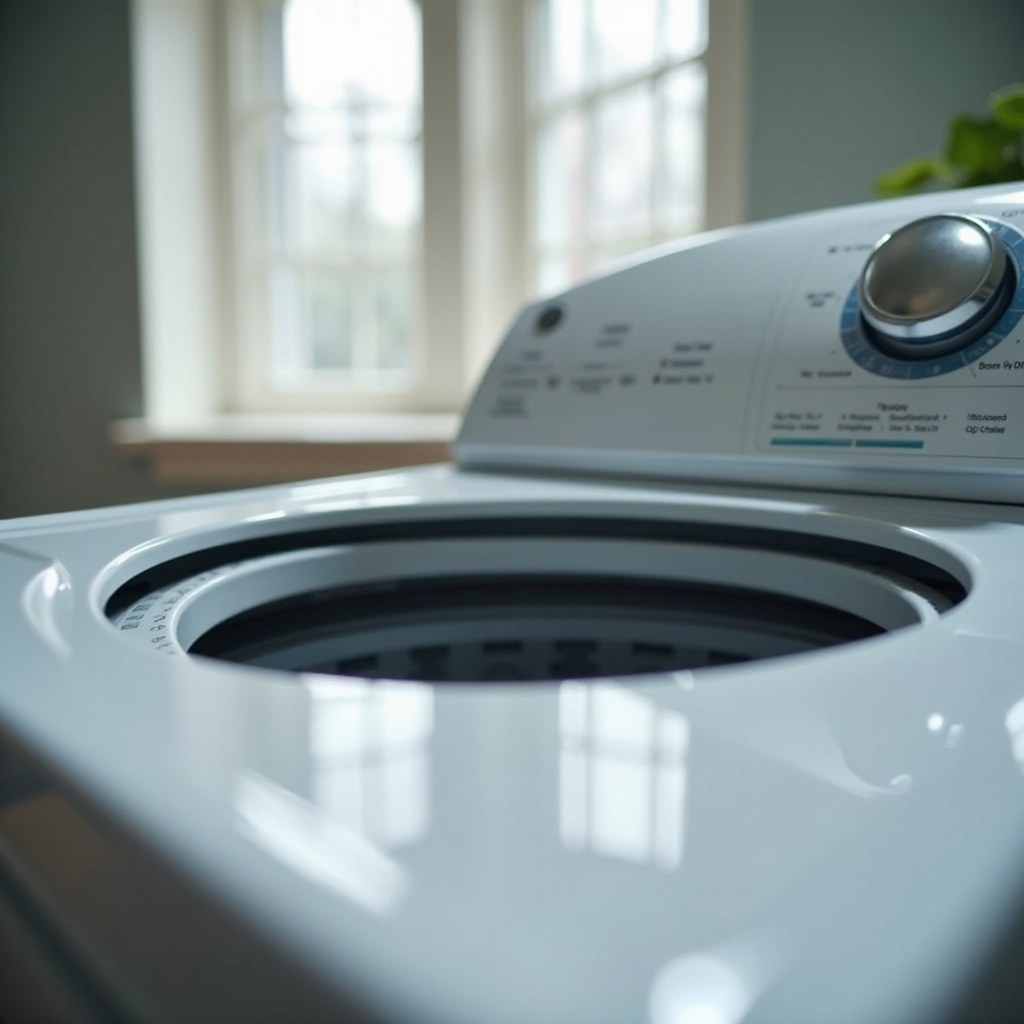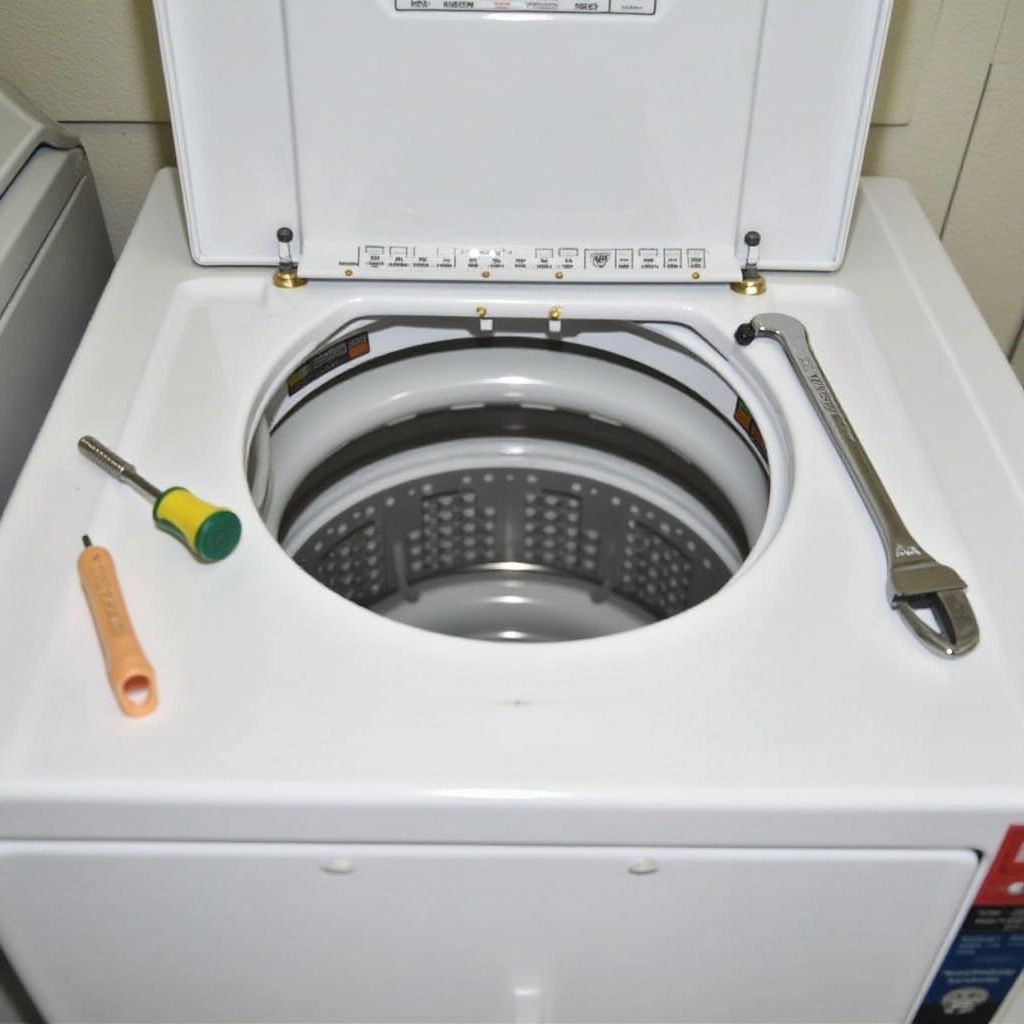Introduction
Washing machines are indispensable devices in our homes, saving time and effort in handling daily laundry tasks. When a GE top load washer stops agitating or spinning, it disrupts the normal laundry cycle, leading to frustration. You don't want to spend extra time rewashing clothes or dealing with sopping wet garments. Understanding how to troubleshoot these issues can help keep your washer running smoothly.

Understanding the Problem
When your washing machine fails to agitate or spin properly, it can leave your clothes poorly washed and soaking wet. Agitation is the process where the drum moves back and forth, cleaning the clothes. On the other hand, spinning extracts excess water, reducing drying time. Recognizing the symptoms of these issues is the first step toward fixing them.
What Agitation and Spinning Mean in a Washer
Agitation involves moving clothes through water and detergent to ensure effective cleaning by loosening dirt. Spinning uses centrifugal force to remove water from clothes, making them easier to dry. Both functions are crucial for a complete wash cycle, ensuring your laundry emerges clean and mostly dry.
Common Symptoms Indicating an Issue
Your washer might not be self-diagnosing the issue for you, but you can often tell something's wrong when your clothes remain soaked after a cycle or when you don't hear the usual sounds of garments being agitated. These are red flags indicating that something needs attention in your washer.

Initial Troubleshooting Steps
Before diving into complex repairs, start with basic troubleshooting to check if the solution might be simpler than expected. Sometimes, quick checks can identify and resolve the issue without the need for major fixes.
Safety Precautions Before Getting Started
- Disconnect the washer from the power source to avoid electrical hazards.
- Turn off the water supply to prevent unwanted leaks.
- Wear protective gloves to avoid injury from metal edges or moving parts.
Checking Cycle Settings and Load Balancing
- Confirm the washer is set to the appropriate cycle. Incorrect settings can halt spinning or agitation.
- Ensure that the load is balanced; an unbalanced load can impede washing effectiveness, causing machines to stop spinning.
If these initial checks don't resolve your washer's issues, it may be time to inspect specific components and understand their impact on your machine's functionality.
Diagnosing the Causes
Determining what's causing the agitation or spinning issues involves inspecting different components of the washer. Sometimes, parts can wear out or fail without obvious external signs.
Drive Belt Issues
- Inspect the drive belt for signs of wear or damage. A worn or broken belt means the drum won't rotate correctly.
- Check the tension and alignment; if the belt is loose or misaligned, adjust or replace it using your washer's manual as a guide.
Lid Switch Malfunction
- The lid switch is an essential safety feature that can stop spinning if faulty.
- Test it with a multimeter for continuity. If defective, replace it following the manual's instructions to ensure the switch is compatible and correctly installed.
Motor and Transmission Problems
- Check the motor for obstructions or signs of wear.
- Listen for unusual noises that could indicate transmission problems. Seek professional help if motor or transmission issues are present, as these repairs are more complex.
Drain Pump or Hose Blockages
- Inspect the drain pump and hoses for blockages caused by debris or clothing fibers.
- Clean blockages to restore proper drainage, ensuring your washer can complete its cycles without interruption.
Having diagnosed potential causes, you can now explore simple fixes for some issues without professional help.
DIY Fixes for Common Problems
Once you've pinpointed the problem, there are practical steps you can take for many common issues. These DIY fixes often require basic tools and a little mechanical competency.
Replacing a Faulty Drive Belt
- Purchase a replacement belt recommended for your specific GE washer model.
- Follow the instructions in your owner's manual to safely unhook the old belt and install the new one.
- Efficacy tests should follow, ensuring your washing machine now rotates and agitates as expected.
Repairing or Replacing the Lid Switch
- Access the lid switch; this often involves removing a control panel or cabinet section.
- Once exposed, use a multimeter to confirm the switch's deficiency.
- If necessary, install a new lid switch, then reconnect all panels and wiring before testing the machine.
Addressing Motor and Transmission Malfunctions
For those confident in their mechanical skills, check for any obvious issues with the motor, such as wear or blockages. However, most motor or transmission repairs require specialized knowledge. When in doubt, contact a professional to avoid damaging your machine or voiding any warranties.
Recognizing what can be managed at home and knowing when to call in expert help is crucial for avoiding unnecessary complications and expenses.

When to Call a Professional
For some repairs, a professional technician is necessary to ensure the job is done accurately and safely. Attempting complex repairs without adequate knowledge might exacerbate the problems.
Complex Repairs Beyond DIY
- Motor replacement or significant transmission repairs should be handled by a professional due to their complexity and need for specific tools.
- Failing to do so might risk further damage that could void warranties.
Signs That Professional Help is Needed
- Persisting problems after basic fixes could indicate deeper issues.
- Persistent noises or leaks post-repair suggest issues that need a professional touch.
Professionals bring the expertise and equipment needed for sophisticated diagnostics and repairs, ensuring your washing machine is returned to optimal performance.
Preventative Maintenance Tips
Caring for your washer proactively helps you avoid common issues and extends its useful life. Small actions consistently applied yield significant benefits over time.
Regular Cleaning Routine
- Clean the washer drum monthly to eliminate residue and mold buildup by running a hot water and vinegar cycle.
Proper Washer Loading Techniques
- Distribute clothes evenly in the drum to prevent the machine from running imbalanced.
- Avoid overloading, which can strain mechanical components.
Inspections of Essential Parts
- Regularly inspect moving parts such as belts and hoses for early signs of wear or deterioration.
- Address these issues promptly to prevent larger problems from developing.
By following these maintenance guidelines, you can forestall many common issues and continue to enjoy a smoothly operating washing machine.
Conclusion
Addressing a GE top load washer not agitating or spinning is often straightforward with the right approach. Know the value of regular maintenance and be proactive in executing basic repairs while acknowledging when expert help is warranted. Keeping your washer in top condition is a matter of diligence and timely action.
Frequently Asked Questions
How often should I perform maintenance on my washer?
Conduct maintenance monthly, including cleaning and checking essential parts for wear.
Is it safe to attempt DIY repairs on my GE washer?
DIY repairs are safe for minor fixes if you follow instructions and take safety precautions.
What can I do to prevent future issues with my washer?
Regularly maintain, avoid overloading, and perform prompt repairs to prevent future complications.
